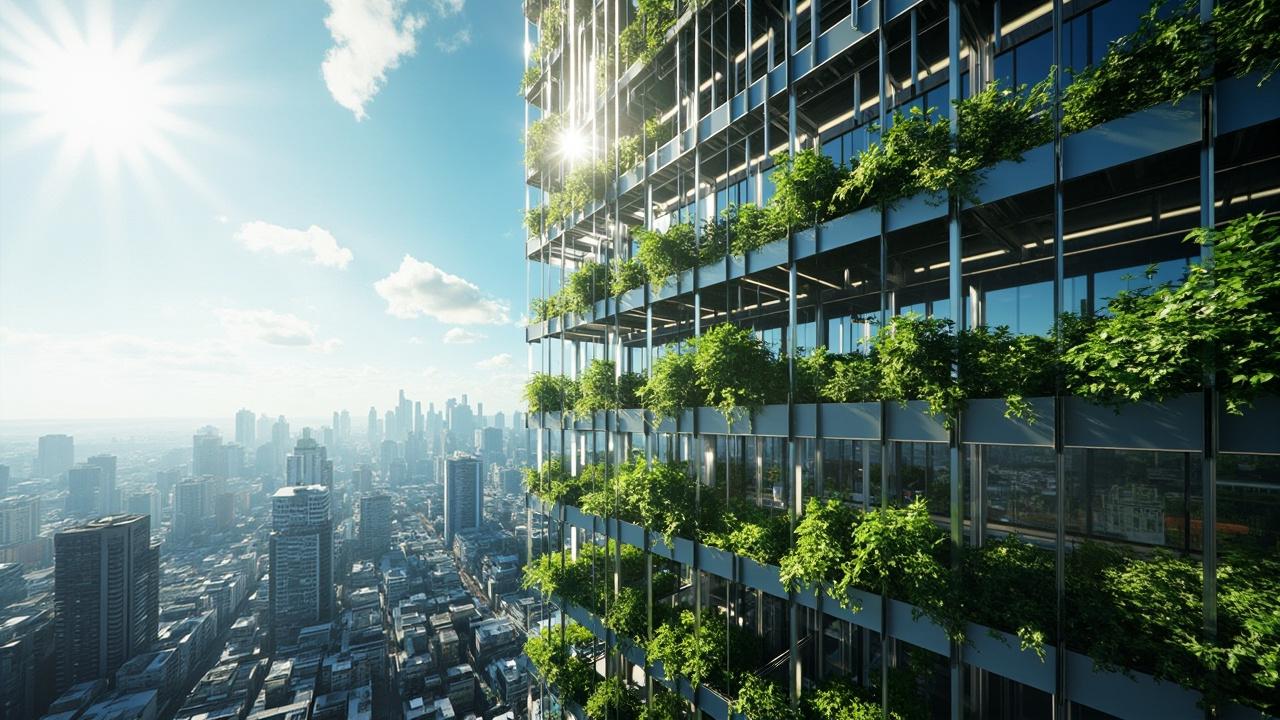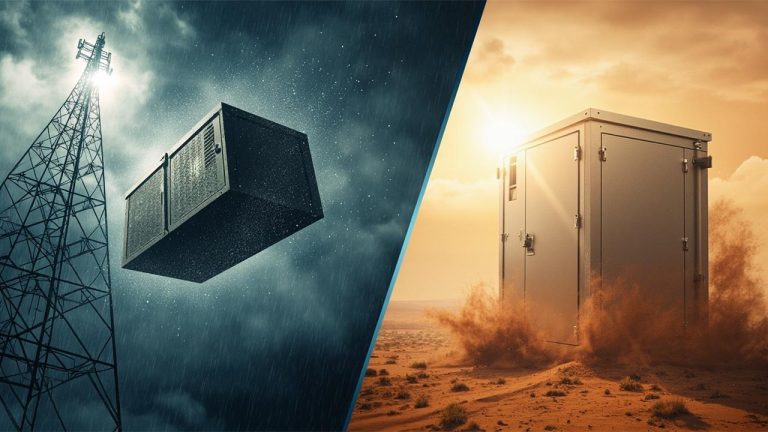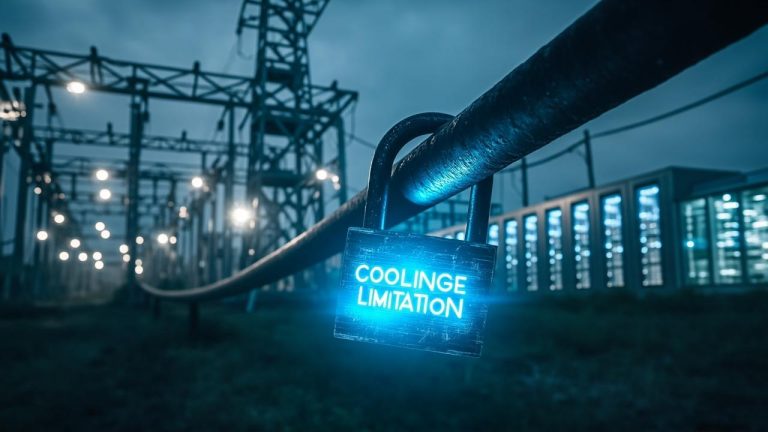The Squeeze Is On
The digital age is booming, and with it, the demand for data storage and processing is skyrocketing. Consider this: the amount of data created daily is projected to reach 463 exabytes by 2025. However, the physical space needed to house the infrastructure supporting this data deluge is becoming increasingly scarce, especially in densely populated urban centers. This reality forces data center operators to reconsider traditional expansion strategies.
For decades, the default approach has been to “build out”-acquiring more land and constructing sprawling, single-story facilities. Yet, in prime locations, land is becoming a luxury, creating a significant hurdle for meeting ever-growing capacity demands. This blog post explores an increasingly viable solution: vertical expansion. We delve into how multi-story data centers are rising to meet the challenge of limited land availability.
Vertical construction, or building “up,” offers a compelling alternative, allowing data center operators to maximize capacity within a smaller footprint. This approach presents numerous advantages, but also unique challenges. We’ll explore the driving forces behind the land crunch, the benefits and drawbacks of both horizontal and vertical expansion, and examine innovative examples of multi-story data center development from around the world.
The Obvious Solution
It’s easy to assume that the traditional approach of building outwards-horizontal expansion-is inherently the most cost-effective or practical strategy for data center development. After all, sprawling campuses of servers stretched across acres of land have long been the image that comes to mind when thinking about data infrastructure.
However, this assumption overlooks some critical limitations. Horizontal expansion presents a unique set of challenges that can make it a less desirable option, especially in today’s rapidly evolving technological landscape.
One major factor is the increasing difficulty and expense of land acquisition. Locating and securing large tracts of land, particularly in areas with robust infrastructure and skilled labor pools, has become a competitive endeavor. Even when land is available, the costs associated with acquiring and preparing it for development can be substantial.
Additionally, horizontal expansion leads to increased distances for cabling and networking, potentially impacting performance and adding complexity to network management. This increased latency becomes a serious concern when aiming to support high-performance applications that require real-time or near-real-time data processing. The environmental impact of expansive developments also warrants consideration, as sprawling construction can disrupt ecosystems and contribute to habitat loss.
Furthermore, the choice between greenfield and brownfield development significantly impacts the feasibility of horizontal expansion. Greenfield sites, previously undeveloped land, are becoming increasingly scarce, especially in proximity to urban centers and essential utilities.
Brownfield sites, on the other hand, often present environmental remediation challenges and regulatory hurdles that can add to the project’s overall complexity and timeline. With these factors in mind, the seemingly “obvious” solution of building out quickly reveals itself to be a strategy fraught with potential pitfalls, paving the way for alternative approaches such as building upwards in the form of multi-story data centers.
| Factor | Impact on Horizontal Expansion |
|---|---|
| Land Acquisition Costs | Higher expenses, especially in prime locations |
| Cabling Distances | Increased latency and network complexity |
| Environmental Impact | Habitat disruption and potential regulatory issues |
| Greenfield Site Availability | Becoming increasingly scarce near urban areas |
Reaching for the Sky
The limitations of horizontal expansion are pushing data center operators to look up, quite literally. The concept of multi-story data centers is gaining traction as a pragmatic solution to the growing demand for data processing and storage in areas where land is scarce and expensive. Instead of sprawling across vast acres, these facilities maximize capacity within a smaller geographical footprint, offering a compelling alternative to traditional single-story builds.
The benefits of vertical construction extend beyond simply fitting more servers into a confined space. One major advantage is the potential for reduced land acquisition costs. In densely populated urban areas, land prices can be astronomical, making horizontal expansion financially prohibitive.
By building upwards, operators can significantly lower their land expenses, freeing up capital for other critical investments such as advanced cooling technologies and robust security systems. Speaking of security, vertical designs naturally enhance security protocols. Access to different levels can be restricted, creating segmented security zones and making it more difficult for unauthorized personnel to gain entry.
Furthermore, vertical data centers have the potential to be more energy-efficient. This is due to several factors, including the ability to leverage natural ventilation in certain climates and a reduced reliance on extensive HVAC systems. Moreover, the concentration of IT equipment in a smaller area can streamline power distribution and cooling efforts. Some specific examples of benefits include:
Challenges of Vertical Construction
Building a data center upwards presents a unique set of complexities that aren’t encountered in traditional, sprawling builds. While the benefits of increased capacity within a smaller footprint are enticing, successfully executing a vertical data center project requires careful consideration of various technical and logistical hurdles. These challenges can significantly impact the project’s timeline, budget, and overall operational efficiency.
Structural and Engineering Considerations
The primary challenge lies in the structural engineering needed to support a data center’s immense weight and dynamic loads. Data centers are filled with heavy equipment, including servers, cooling systems, and power infrastructure. A multi-story data center must be designed to bear this weight across multiple floors, ensuring structural integrity and stability, especially in areas prone to seismic activity or high winds.
Specialized construction techniques and materials may be required, adding to the project’s complexity and cost. The building must also effectively manage vibrations from equipment to prevent any disruptions or damage.
Power and Cooling Distribution
Distributing power and maintaining optimal cooling across multiple floors present significant engineering challenges. Ensuring adequate power supply and efficient cooling requires sophisticated designs and robust infrastructure. The vertical distribution of power necessitates careful planning to minimize voltage drop and ensure reliable power delivery to each floor. Similarly, cooling systems must be designed to effectively dissipate heat generated by the servers on different levels.

Traditional HVAC systems may not be sufficient, requiring the adoption of advanced cooling technologies like liquid cooling or direct-to-chip cooling. These systems, while efficient, require specialized infrastructure and expertise for installation and maintenance. Furthermore, the location of cooling infrastructure within the structure needs to be carefully considered as the higher floors of multi-story data centers may experience higher average temperatures.
Logistical and Cost Implications
Construction logistics for vertical projects also differ considerably from those of horizontal builds. Limited site access, especially in urban areas, can complicate material handling and equipment installation. Working at heights introduces safety concerns and requires specialized equipment and training for construction crews.
Furthermore, the construction of multi-story data centers generally has a higher cost per square foot compared to horizontal construction, largely due to the increased complexity of structural engineering, specialized equipment, and logistical challenges. However, these increased upfront costs need to be weighed against the long-term benefits of reduced land acquisition costs and increased capacity within a smaller footprint. Ultimately, addressing these challenges effectively requires careful planning, innovative design solutions, and collaboration between engineers, architects, and construction teams.
Innovations in Vertical Data Center Design
When designing multi-story data centers, innovation is paramount to overcoming the unique challenges presented by vertical construction. Unlike traditional, sprawling campuses, these facilities demand creative solutions for space optimization, efficient cooling, and reliable power distribution. The constraints of a smaller footprint force designers to think outside the box and adopt technologies that maximize performance and minimize environmental impact.
High-Density Cooling Takes Center Stage
One key area of innovation lies in cooling technologies. Traditional air-cooling systems can become inefficient and costly in dense, vertical environments. As a result, cutting-edge facilities are increasingly turning to high-density cooling solutions such as liquid cooling and direct-to-chip cooling. Liquid cooling, which involves circulating coolant directly over heat-generating components, offers superior heat transfer capabilities compared to air.
Direct-to-chip cooling takes this concept even further by placing microchannels or cold plates directly on the processors themselves. These advanced cooling methods enable higher rack densities, allowing for greater compute power within a smaller space. This, in turn, reduces the overall energy consumption and carbon footprint of the data center.
The Modular Advantage
Modular construction techniques are also gaining traction in the design of vertical data centers. Instead of building the entire facility from scratch on-site, prefabricated modules can be manufactured off-site and then assembled like building blocks. This approach offers several advantages, including faster deployment times, reduced construction costs, and improved quality control.
Modules can be customized to meet specific requirements, allowing for flexibility in design and scalability. Furthermore, modular construction minimizes disruption to the surrounding environment, which is particularly important in densely populated urban areas.
Smart Power and Sustainability
Beyond cooling and construction, innovations in power distribution are essential for ensuring the reliability and efficiency of multi-story data centers. Advanced power distribution systems, such as those employing busbars and intelligent power monitoring, provide greater flexibility and control over power consumption.
Additionally, green vertical data centers are incorporating sustainable practices such as using renewable energy sources, implementing rainwater harvesting systems, and optimizing building design for natural ventilation. Some facilities are even integrating cooling infrastructure into the building facade, using the building’s exterior to dissipate heat and reduce the load on traditional cooling systems.
Case Studies
Globally, several innovative multi-story data centers demonstrate the feasibility and benefits of vertical construction. These facilities, often located in densely populated urban areas, represent a strategic response to land scarcity and escalating real estate costs. By examining their design features, operational efficiencies, and impact on their surroundings, we can gain valuable insights into the potential of vertical data center development.
One notable example is in Singapore, where land is notoriously limited. This facility leverages advanced cooling technologies and a modular design to maximize capacity within its vertical footprint. Its location is extremely important to the technology economy of the region.
Another pioneering project is in London, UK, showcasing a sustainable design with integrated green technologies. This facility not only addresses the city’s data needs but also contributes to its environmental goals by reducing its carbon footprint and incorporating renewable energy sources. The efficiency and sustainability of these facilities demonstrate the feasibility of multi-story data centers.
In North America, a facility in Chicago, Illinois, demonstrates how brownfield sites can be repurposed for vertical data center development. This project transformed a former industrial site into a state-of-the-art data center, revitalizing the area and providing valuable infrastructure for the city’s growing tech sector. These case studies highlight the diverse applications and benefits of vertical data centers in different geographical contexts, paving the way for wider adoption of this innovative approach to data center construction.
| Location | Key Features | Benefits |
|---|---|---|
| Singapore | Advanced cooling, modular design | High capacity, efficient land use |
| London, UK | Sustainable design, green technologies | Reduced carbon footprint, renewable energy |
| Chicago, Illinois | Brownfield redevelopment, state-of-the-art technology | Site revitalization, infrastructure for tech sector |
The Future Is Up
The data center landscape is poised for a significant transformation, one that looks increasingly upward. Several converging trends suggest that vertical expansion will become an even more prevalent strategy in the years to come.

Firstly, the adoption of modular and prefabricated components is set to accelerate. This approach allows for faster deployment, reduced construction time, and greater flexibility in design. Imagine entire data center modules being manufactured off-site and then lifted into place within a multi-story structure. This streamlined process not only speeds up the construction timeline but also minimizes disruption to the surrounding environment.
Modular designs also allow for easier upgrades and expansions as technology evolves. This can be achieved without requiring extensive downtime, a critical consideration for businesses that rely on uninterrupted data services. Consider the benefits:
- Speed of deployment
- Flexibility and Scalability
- Reduced on-site disruption
Secondly, the integration of Artificial Intelligence (AI) and automation will revolutionize the management and operation of multi-story data centers. AI-powered systems can optimize cooling, power distribution, and security protocols in real-time, maximizing efficiency and minimizing downtime. Automation can handle routine tasks, freeing up human staff to focus on more strategic initiatives.
Imagine AI algorithms predicting potential equipment failures before they occur, or automated robots patrolling the facility and identifying security breaches. This level of intelligent management will be essential for operating complex, high-density vertical facilities.
Finally, the emergence of 5G and the impending arrival of 6G networks will place even greater demands on data center capacity, particularly in urban areas. The ultra-low latency and high bandwidth offered by these next-generation networks will drive the need for data centers to be located closer to end-users. This proximity will necessitate creative solutions for overcoming land constraints, further solidifying the role of vertical expansion.
These high-density deployments in multi-story data centers will allow for businesses to be competitive, but also innovative in how they choose to support edge-computing. As such, expect to see an accelerated expansion vertically as businesses adapt to the need.
Conclusion
The data center landscape is undeniably evolving, driven by relentless demand and constrained by the physical realities of land availability. Embracing vertical expansion is no longer a futuristic fantasy, but a pragmatic necessity for many organizations seeking to expand their digital footprint.
As we’ve explored, the decision to build up, rather than out, is a complex one, fraught with technical and logistical challenges. However, the potential benefits – increased capacity in limited spaces, reduced land acquisition costs, and enhanced security – are compelling and becoming increasingly difficult to ignore.
The journey towards widespread adoption of multi-story data centers will undoubtedly require continued innovation and collaboration across the industry. We need engineers pushing the boundaries of structural design, cooling technologies, and power distribution. We need architects creating aesthetically pleasing and environmentally conscious vertical facilities.
And we need forward-thinking data center operators willing to embrace new approaches to construction and management. Overcoming the obstacles associated with vertical builds is an investment in the future, paving the way for more sustainable and efficient data infrastructure.
The rise of vertical data centers represents a paradigm shift in how we think about and build these essential facilities. It signifies a move away from sprawling, land-intensive campuses towards more compact, strategically located, and resource-conscious solutions.
By embracing the vertical frontier, data center operators can unlock new opportunities for growth, innovation, and sustainability in an increasingly data-driven world. As urban landscapes become denser and the demand for digital services continues its exponential climb, the ingenuity and adaptability demonstrated in vertical data center construction will be crucial in shaping the future of our digital infrastructure.
Frequently Asked Questions
What are the primary advantages of building multi-story data centers compared to single-story facilities?
Building multi-story data centers primarily offers advantages in land utilization. Especially in urban areas or locations where real estate is expensive and scarce, a multi-story design allows for a greater concentration of computing power within a smaller footprint. This can significantly reduce land acquisition costs and permit expansion in areas with limited horizontal space.
How does the cost of constructing a multi-story data center compare to a single-story data center with equivalent capacity?
The cost of constructing a multi-story data center is generally higher than a single-story facility with equivalent capacity. This is due to the increased complexity in structural engineering, vertical transportation systems (elevators, lifts), and the need for robust infrastructure to support the weight and operational demands across multiple levels.
Additional costs are also associated with fire suppression and security measures tailored for vertical layouts.
What are the key challenges associated with cooling and ventilation in multi-story data centers?
Cooling and ventilation present significant challenges in multi-story data centers because warm air rises, creating temperature stratification. Ensuring consistent and efficient cooling across all floors requires sophisticated HVAC systems, potentially including liquid cooling or advanced air management strategies. Effective ventilation is essential to prevent hot spots and maintain optimal operating temperatures for IT equipment on every level.
How does the vertical design of multi-story data centers impact power distribution and redundancy?
The vertical design of multi-story data centers significantly impacts power distribution and redundancy by increasing the complexity of routing power feeds. Implementing redundant power systems, such as multiple Uninterruptible Power Supplies (UPS) and backup generators, becomes crucial to mitigate the risk of power failures affecting entire floors.
Vertical power distribution requires careful planning to minimize voltage drop and ensure reliable power delivery to each server rack.
What specific structural engineering considerations are crucial when designing multi-story data centers?
Specific structural engineering considerations are critical for multi-story data centers, primarily focusing on load-bearing capacity and vibration dampening. The building must be designed to support the immense weight of the IT equipment, cooling infrastructure, and power systems on each floor.
Vibration control is also crucial to prevent equipment damage and ensure stable operations, requiring robust structural designs and specialized isolation techniques.




